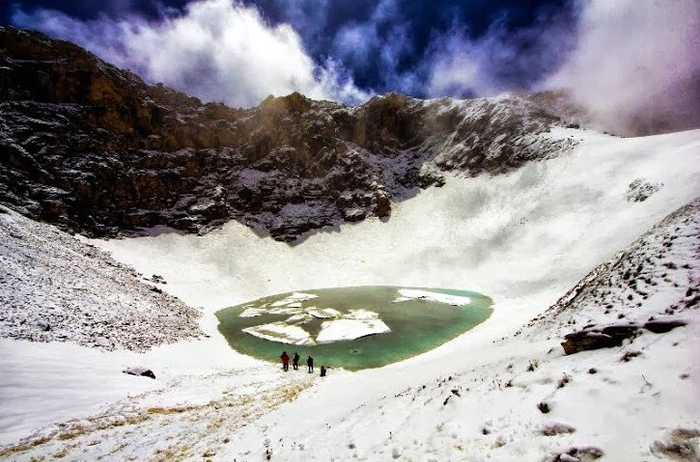Published 13:24 IST, March 4th 2024
In 1942, a forest ranger Hari Kishan Madhwa found hundreds of skeletons in Roopkund lake. He informed the British authorities, who came to a conclusion.
Advertisement
Located in Uttarakhand at an altitude of 16,470 ft, Roopkund is a famous trekking destination. The lake is encased in ice for the majority of the year. However, not just ice but another mystery surrounds this lake like no other: The mystery of hundreds of skeletons.
The destination has intrigued anthropologists for decades. Let’s see what we know about it.
Advertisement
Mystery surrounding Roopkund lake
In 1942, a forest ranger of the Nanda Devi National Park, Hari Kishan Madhwa found hundreds of skeletons. He informed the British authorities, who came to the conclusion that the casualties are of a hidden Japanese force since it was the time of World War II.
However, a research later revealed that the skeletons were much older and the theory was ruled out.
Advertisement

Theories around the Roopkund lake
The lake not just had skeletons but also iron spearheads, wooden artefacts, rings and leather slippers. A local legend suggests that the skeletons belong to the king of Kannauj, his wife, servants and others who perished more than 800 years ago due to a hailstorm.
Another theory says that the skeletons are the remains of Indian soldiers who tried to invade Tibet. Many people also believe that the lake was a cemetery where people buried those who passed away during an epidemic.
Advertisement
What does research say?
Researchers have been intrigued by the 300 skeletons that have been found in this lake. In the 1950s, the Anthropological Survey of India conducted a study. The result indicated that the skeletons had head injuries which were possibly caused by something forceful being thrown.
The latest study involved 28 authors from 16 institutions in the US, Germany and India. As a part of this study, a genetic analysis and carbon dating of 38 skeletons was done. It was then discovered that some of the skeletons date back to around 1,200 years. The skeletons were genetically different and their deaths were separated by as much as 1,000 years.
Advertisement
The findings of the story debunked the theory of catastrophic incidents.
The study revealed that the group comprised of two different roots. Some were South Asian and the others were eastern Mediterranean.
Advertisement
13:24 IST, March 4th 2024